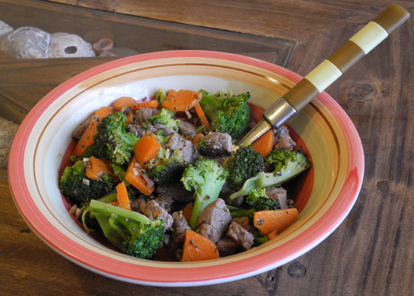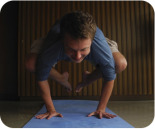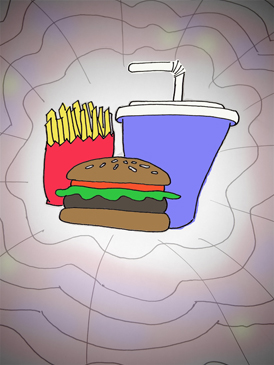Becoming Paleo, Part 7: Switching to the Paleo Diet
 Saturday, July 23, 2011 at 10:44AM
Saturday, July 23, 2011 at 10:44AM  Meals like this simple mix of stir-fried broccoli, carrots, and beef became a regular feature of my life once I went Paleo. By John Michael
Meals like this simple mix of stir-fried broccoli, carrots, and beef became a regular feature of my life once I went Paleo. By John Michael
With the projections of anxiety deactivated, and with my connection to my health instinct firmly established, I could finally begin my switch to the Paleo diet. I’m not going to pretend that it was an overnight switch; all in all, it took me about a month and a half to become 100% Paleo. A large part of the reason for this delay was that I was still bothered by the ghosts of my anxious cravings. Even though they were nowhere nearly as strong as they had been before, I still didn’t struggle to resist them, because I feared their repression. Instead, I would indulge them, and carefully observe myself as I did so, hunting for clues as to the reason why I felt these minor cravings, and then I would alter my behavior according to whatever knowledge I gained from these observations.
Sporadic cravings aside, there were other challenges that going Paleo presented me with. Now that a large portion of the food that I used to eat was out of the picture, I had to learn how to cook new meals. Fortunately, though, my Paleo meals are generally very simple, often consisting of no more than a portion of meat, a mix of vegetables, and a piece of fruit. I also had to learn where the best places to buy my Paleo foods were, and whether there were dangers associated with the consumption of these new foods, like pesticide contamination in my fruits and vegetables, or mercury contamination in my fish. Yet these challenges were relatively simple and limited in scope when compared to the great challenge that I faced each time that I finished a Paleo meal.
Even though I would only eat as much as I needed, and would never overeat, after each Paleo meal I would feel an enormous surge of energy that prevented me from being sedentary; I was often so full of energy that I would find it necessary to use my body for at least a half an hour. Obviously this interfered with my work schedule, but it became a necessary component of my new Paleo lifestyle, because to ignore this energy would actually cause me physical discomfort.
I soon found that my switching to the Paleo diet was radically changing my life. I was transforming from an unhealthy and sedentary young man who spent a good part of his free time seeking out the industrial foods that calmed his anxious cravings, to a relatively healthy and fit young man who had begun to spend his free time exercising and engaged in other active endeavors. The change that I had made to my diet was echoing throughout my entire life, and leading to great and positive alterations in my personal culture.
Suddenly, upon becoming 100% Paleo, I was faced with a question. “What should I do with all of this energy?” I asked myself, and, surprisingly, my answer was, “I think I’ll take up dancing.”
Thanks for reading about the transformative journey that I undertook in order to switch to the Paleo Diet. If you have a similar story, or if you’d just like to talk about the challenges that you’ve faced in leaving behind industrial foods and switching to this diet, then please feel free to post them in the comments section below.





